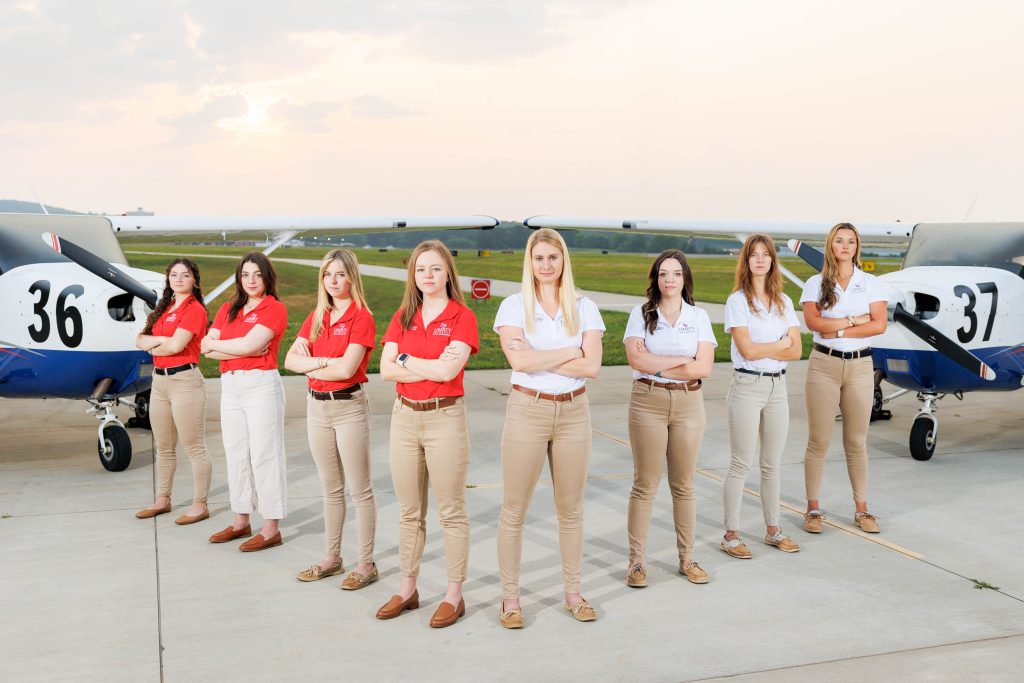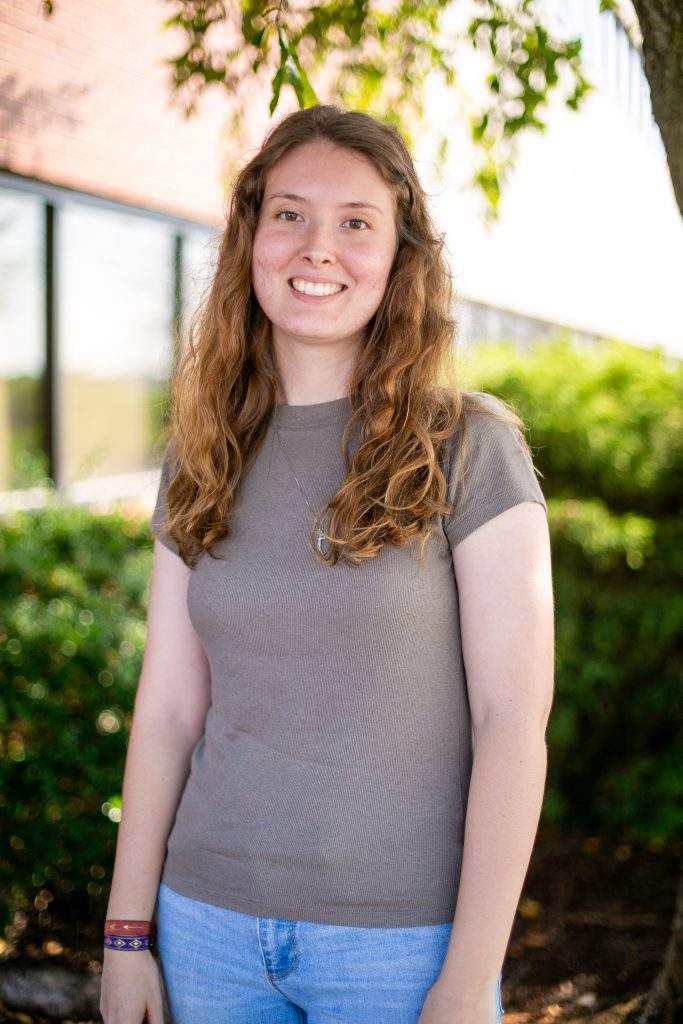Female aviation team wins first place in their category, spreads gospel at air race

From sunrise to sunset, hundreds of female aviators soared across the country for four straight days in what was the 46th annual Air Race Classic. Starting June 20, the fliers gathered in Grand Forks, North Dakota before making their way to Homestead, Florida. Among the aviation teams, one of Liberty’s teams, the Liberty Belles I, scored first place in the Electronic Data Monitoring Aircraft (EDMA) category.
The Liberty Belles I team consisted of pilot Savannah Hughes, co-pilot Olivia Smith and navigator Madison Calhoun. The Liberty Belles II placed third in the EDMA Class and included pilot Grace Johnson, co-pilot Abigail Fletcher and navigator Katrina Schlenker.
All teams had three members functioning in different roles. The pilot sat in the cockpit and controlled the plane. The co-pilot, or instructor, monitored the pilot and stayed on the lookout, making sure they followed all of the air race rules, didn’t get too close to other aircraft and correctly navigated the weather conditions. The navigator, or back-seater, typically being the least experienced member, did whatever they could to assist the pilot and co-pilot.
All racers flew a handicap a month before the competition. A handicap is flying a rectangle in the sky while you are at a target rpm (revolutions per minute), trying to find an average groundspeed. Each team’s individual average groundspeed became a baseline the judges used to score their actual performance in the air race.
As the teams raced toward the terminus airport, they tried to beat their own groundspeed rather than beat another team to the finish line. Teams were scored and then ranked based on how close they performed to their groundspeed.
What separated the EDMA Class from the Competition is the rpm limit. Aircraft in the EDMA category had to restrict themselves to flying at 2500 rpm, which is an enforced standard because going full throttle (i.e. at a higher rpm) in EDMA planes is not healthy for the engine. The Competition Class aircraft could go full throttle and not worry about rpm.
“We have an SD card that we can show to the race officials at the end of the race that we were at 2500 (rpm),” Hughes, senior commercial/corporate aviation major, said. “During the race we couldn’t go full throttle or else that SD card would alert the race officials. The other teams pretty much just had to go full throttle the entire race, but their planes were allowed to do that, whereas ours have to be restricted. … That’s why they’re slowly integrating us into the race. Essentially, we’re still racing the same.”
The overall winner of Competition Class was Kent State University, coming in only 5.563 mph below their groundspeed. In the EDMA Class, the Liberty Belles I came in 6.268 mph under their groundspeed. They beat out four other teams.
No team outperformed its groundspeed because they faced headwinds throughout most of the race. To put it in perspective, if the Liberty Belles I had raced in the Competition Class, they would have come in around fifth place overall.
Teams also had to avoid racking up any penalties, which included not having specific lights on, flying too low or too high, missing radio calls or coming too close to other aircraft.

“At every single airport, there are judges,” Smith, a first-year graduate pursuing her masters in aviation safety, said. “There are many volunteers across the US that have heard about the air race and just decided to volunteer their time freely … The judges are volunteering specifically to pay attention to those specified rules we have to follow and see if we don’t follow them. If we don’t, we have big painted numbers on the side of our aircraft so they can see which aircraft didn’t follow that rule.”
Smith explained how Liberty had attended the air race the year before, which was the first year it was held since the COVID-19 pandemic in 2020. Since Liberty raced noncompetitively, last year’s team took the time to learn all they could about the race so they could be ready this year.
In preparation for the air race, the Liberty Belles used the aviation simulators in DeMoss Hall to practice fly-bys, which is when a plane travels at a fast speed low to the ground. They also practiced working together as a team and reacting to cue words. As a co-pilot, Smith was responsible for inspecting the aircraft, a Cessna Skyhawk 172S, and preparing the documents they would need for the race.
“This race, I learned a lot more about what it looks like to work together as a team,” Smith said. “The girls on my team this year did a phenomenal job of taking their roles seriously and really working through them to the fullest extent to help out our team as a whole.”
The air race also provided an opportunity for the Liberty Belles to network with other women in the aviation field. Hughes mentioned they were able to spread the gospel to the other teams, something she appreciated. One of the reasons she decided to pursue aviation because she saw the need for God in the industry.
“We were able to ask people what kind of background they have; if they go to church,” Hughes said. “We just got to fellowship and show the Lord’s kindness through our career.”
Smith became interested in the aviation field because her family traveled a lot growing up, and she always enjoyed the flights. She attended an airport summer camp which eventually led to her earning her private pilot certification when she was 17.
“(The air race) was a really positive experience,” Smith said. “I was really thankful to be a part of it. I’m hoping next year I can cheer on the next group.”
To learn more about the Air Race Classic, visit this page.
Bear is the feature editor for the Liberty Champion. Follow her on X

